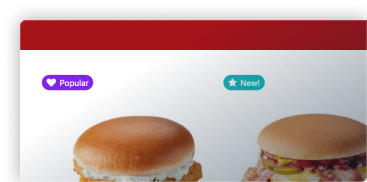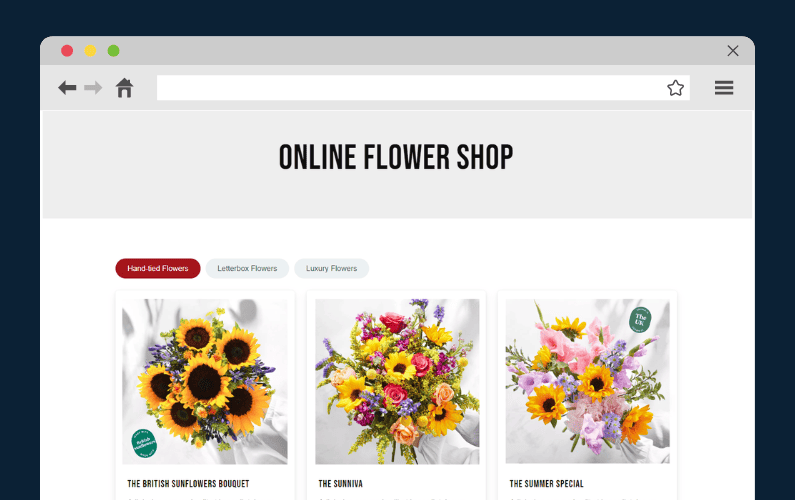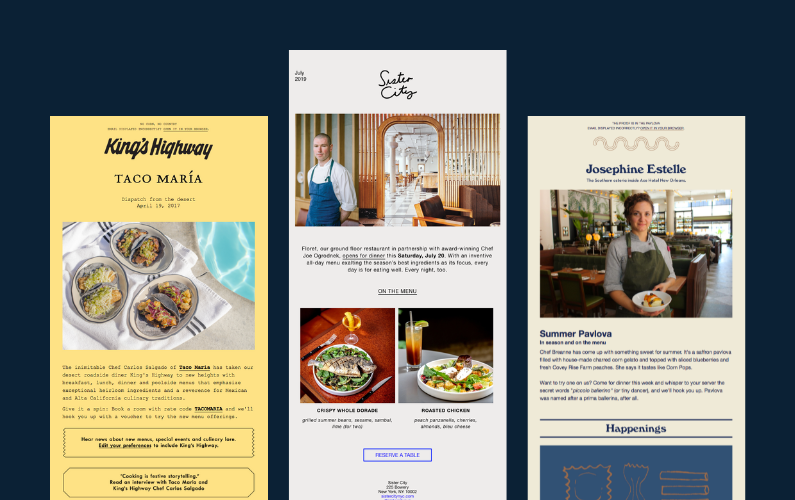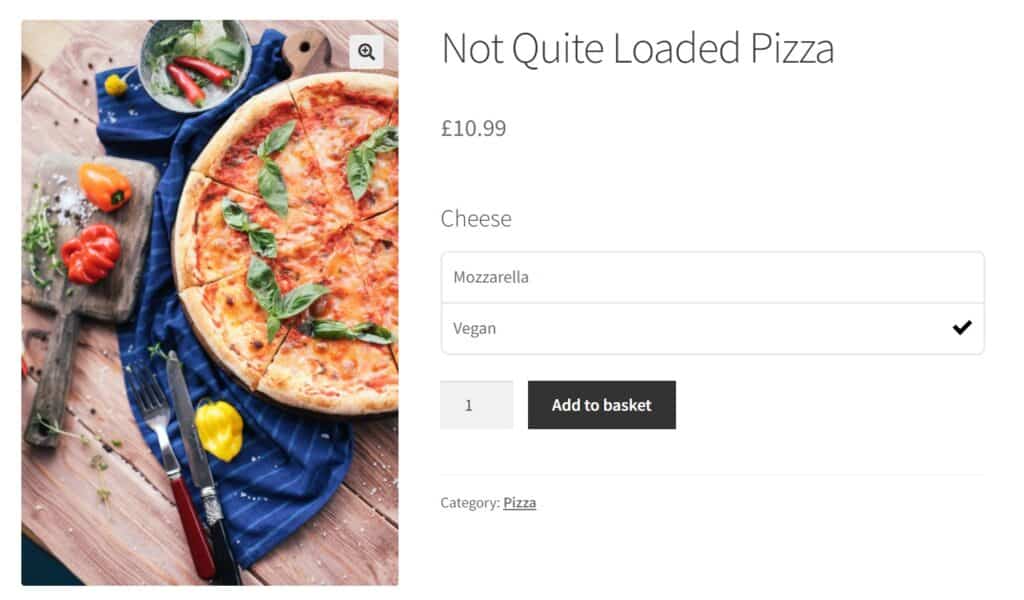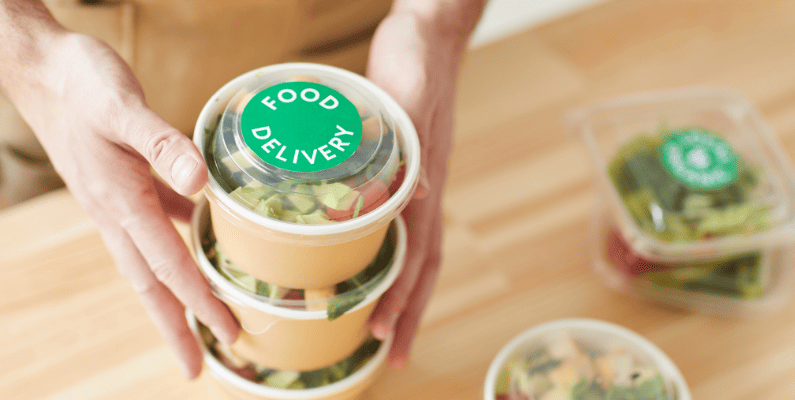
If you’re aspiring to sizzle in the restaurant scene, launching a delivery only restaurant might just be the recipe for your success.
👋 In this guide, we’ll navigate the ins and outs of running a delivery only restaurant, tapping into the potential of this trending business model.
We’ll explore:
- What is a delivery only restaurant?
- Its distinction and similarities with virtual restaurants and ghost kitchens.
- The benefits of operating without a dine-in space.
- 10 tips for running a delivery only restaurant.

In today’s fast-paced world, convenience is king. A staggering 68% of consumers now prefer the comfort of their homes over the ambiance of a restaurant. This shift in dining preferences drives the meteoric rise of delivery-only eateries and food delivery apps like DoorDash, Uber Eats, and Postmates.
You need more than passion to seize your share of this flourishing market. You need strategy and insight. That’s where this guide, infused with industry best practices and expert advice, steps in. From conceptualization to execution, we’re here to ensure your delivery-only restaurant is a culinary sensation.
Let’s dive into the details.
What is a delivery-only restaurant?
As the name suggests, a delivery-only restaurant is a culinary establishment solely focusing on preparing and delivering food to customers. Unlike traditional restaurants, it doesn’t have a physical space, or storefront for customers to dine in.
Instead, it operates from a commercial kitchen space where orders are received online or via phone, meals are prepared, and then dispatched for delivery. It’s a food delivery service for those looking to order from home.
The primary operations of a delivery-only restaurant revolve around:
- Receiving orders through a digital platform or over the phone.
- Preparing the food in a timely manner.
- Ensuring the food is packaged securely to maintain its quality during transit.
- Coordinating with delivery personnel or services to get the food to the customer’s doorstep.
The unique selling point of such a restaurant is its convenience. Without the need for a dine-in space, overhead costs are reduced, and the focus can be entirely on food quality and delivery efficiency.
This model caters to the modern consumer’s demand for quick, quality meals enjoyed in the comfort of their own homes. As well as start-up restaurateurs who are looking for a way to start a new restaurant without the overhead costs.
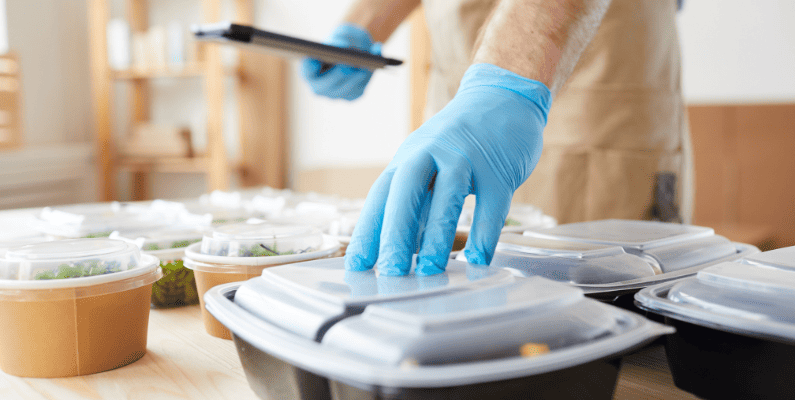
How is a delivery-only restaurant different from virtual restaurants and ghost kitchens?
Virtual restaurant: A virtual restaurant is primarily a brand or a restaurant that exists only online. It might operate out of an existing kitchen of a traditional restaurant but doesn’t have its own physical dining space. The primary focus is on delivery and takeout. It often, but not always, relies on third-party delivery platforms or delivery companies for order placements and deliveries.
Ghost kitchen: A ghost kitchen, also known as a cloud kitchen, is a facility that houses multiple kitchens but no dine-in area like a mortar restaurant. Various brands or restaurants can operate from a single ghost kitchen, preparing food exclusively for delivery.
- Existence and Branding:
- A Delivery Only Restaurant is a standalone entity with its own brand identity, focusing solely on delivery.
- A Virtual Kitchen is an online-only brand, possibly sharing a kitchen with an existing restaurant.
- A Ghost Restaurant is a facility housing multiple restaurant brands, each with its distinct identity, all operating exclusively for delivery. They work in a mostly shared kitchen.
- Physical Space:
- Both the Delivery Only Restaurant and Ghost Kitchen have their own dedicated kitchens, but neither offers a dine-in space.
- The Virtual Restaurant, on the other hand, doesn’t have its own separate space and might operate from another restaurant’s kitchen.
- Operations:
- Delivery Only Restaurants typically manage their own orders and deliveries but might also use third-party platforms.
- Virtual Restaurants heavily rely on third-party platforms for both orders and deliveries.
- Brands within a Ghost Kitchen might either manage their own orders or use third-party platforms.
While all three concepts revolve around the idea of delivery without a dine-in experience, they differ in terms of branding, physical space, and operations.
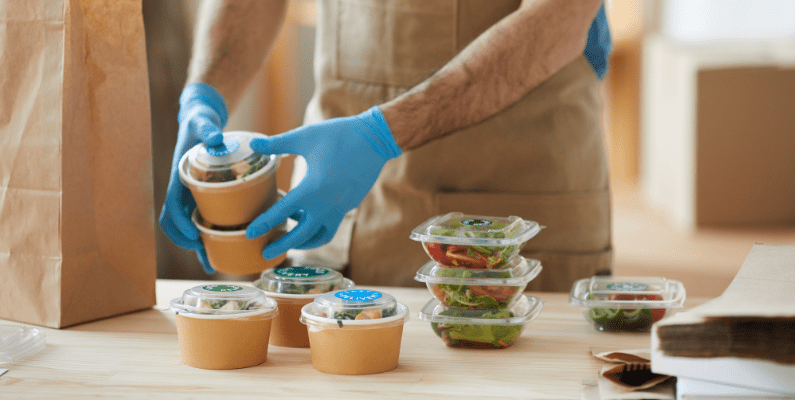
The benefits of running a delivery only restaurant
The concept of running a delivery only kitchen has gained significant traction in recent years, and for good reasons. Let’s delve into some of the standout benefits of this innovative business model:
Cost savings due to no dine-In space
One of the most evident advantages of a delivery-only model is the substantial reduction in overhead costs.

Traditional restaurants often grapple with expenses like rent for prime locations, interior decor, utilities, and staffing for front-of-house operations. By eliminating the need for a dine-in space, delivery-only restaurants can significantly cut down on these costs.
This means more funds can be channeled into enhancing food quality, marketing, or even expanding the restaurant business.
Flexibility in location choice
Without the pressure to secure a spot in a high-footfall area, delivery-only restaurants enjoy the liberty to set up in locations that might be more affordable or convenient.
This flexibility ensures that while the restaurant can serve bustling areas, it doesn’t necessarily have to be situated right in the midst of them, leading to significant rental savings.
Potential for a wider customer base
Running a delivery only restaurant means tapping into the digital realm. With the right marketing and online presence, these restaurants can reach a vast audience transcending geographical boundaries.
In essence, running a delivery only restaurant is not just a trend. It’s a strategic move in the ever-evolving food industry landscape, offering cost savings, location flexibility, and an expansive customer reach.
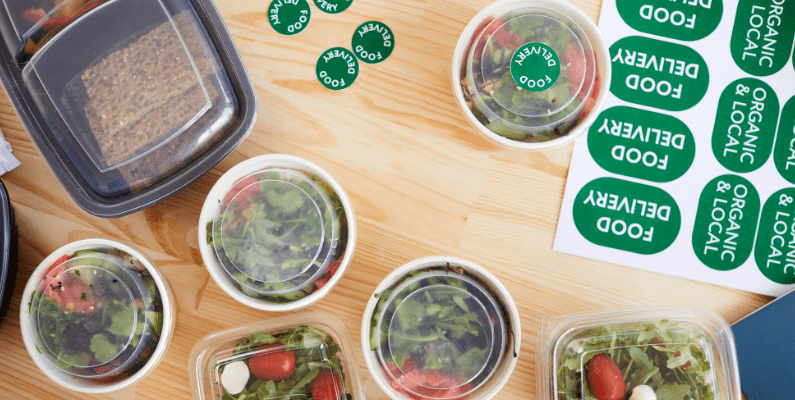
10 tips for running a delivery only restaurant
In the bustling world of food delivery, standing out requires more than just delicious dishes. It’s about the entire customer experience, from when they land on your website to when they savor your food.
With the right strategies and tools, especially leveraging the capabilities of tools like Orderable, you can ensure your delivery-only restaurant is a cut above the rest.
Here are ten essential tips to guide you:
Tip #1: Create an efficient kitchen workflow
The kitchen is the nerve center of your delivery-only restaurant, and its efficiency directly impacts the success of your operations.
An optimal kitchen layout is meticulously designed to facilitate each stage of the food preparation process:
- Prepping ingredients: This is the foundational step. A designated prep area stocked with all necessary ingredients, tools, and equipment ensures that chefs can quickly access what they need. Organized storage solutions, like labeled containers and clear shelving, can speed up ingredient retrieval and reduce prep time.
- Cooking: The cooking zone should be equipped with state-of-the-art appliances and tools catering to your menu’s diverse dishes. The placement of ovens, stovetops, and grills should allow chefs to move effortlessly, reducing the chances of mishaps or delays.
- Plating: Presentation matters. A dedicated plating area ensures that once the dish is cooked, it’s presented in a manner that’s both appetizing and aligned with your brand’s standards. This area should have easy access to garnishes, sauces, and other finishing touches.
- Dispatch: The final step is crucial. The dispatch zone should be organized to ensure that once the dish is plated, it’s promptly packed and handed over to the delivery personnel. This area should be stocked with packaging materials, order invoices, and a system to track and manage outgoing orders.
By segmenting the kitchen into these specific zones, you streamline the workflow and minimize potential bottlenecks. This zonal approach ensures that each order is processed with precision and speed, guaranteeing that your customers receive their meals promptly and in perfect condition.
The efficiency of this workflow directly translates to customer satisfaction, as they receive their orders swiftly, hot, and beautifully presented.
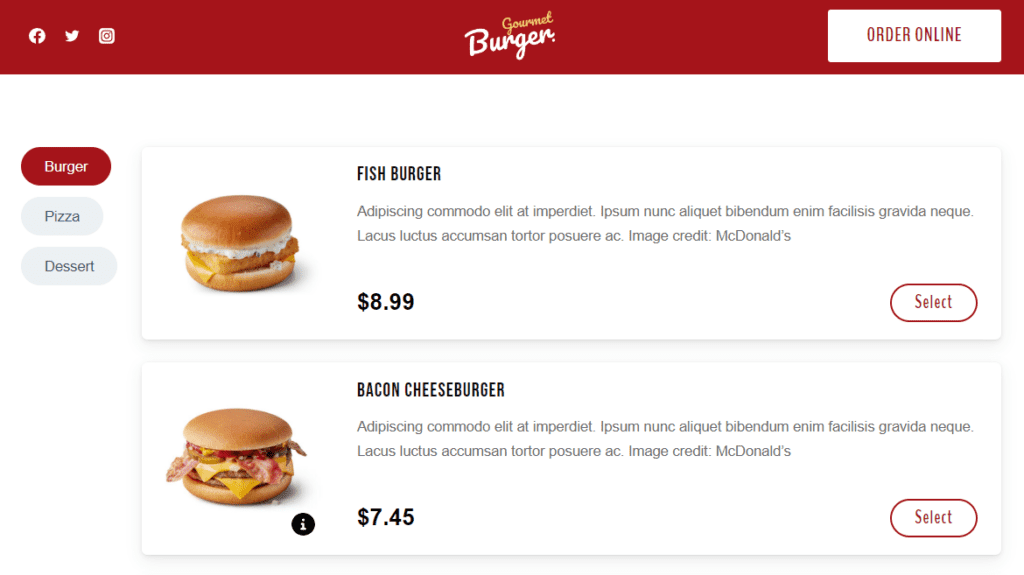
Tip #2: Make sure your website is user-friendly
In the digital landscape, where competition is just a click away, the design and functionality of your website play a pivotal role in retaining potential customers.
A website’s first impression can decide between a completed order and a lost opportunity. Visitors can quickly become frustrated and look elsewhere if a site is cluttered, lacks intuitive navigation, or misses clear call-to-action prompts.
However, for a delivery-only restaurant, the challenge doesn’t end at just creating an attractive website. The platform must also be robust enough to handle online orders, manage inventory, and provide real-time updates to customers.
This is where many businesses falter, as integrating all these features can be complex and often requires multiple tools.
Enter Orderable.
Introducing Orderable: your all-in-one solution
Orderable is a comprehensive online ordering system designed specifically for restaurants and a range of other businesses. It’s not just about aesthetics; it’s about functionality, efficiency, and enhancing the overall user experience.
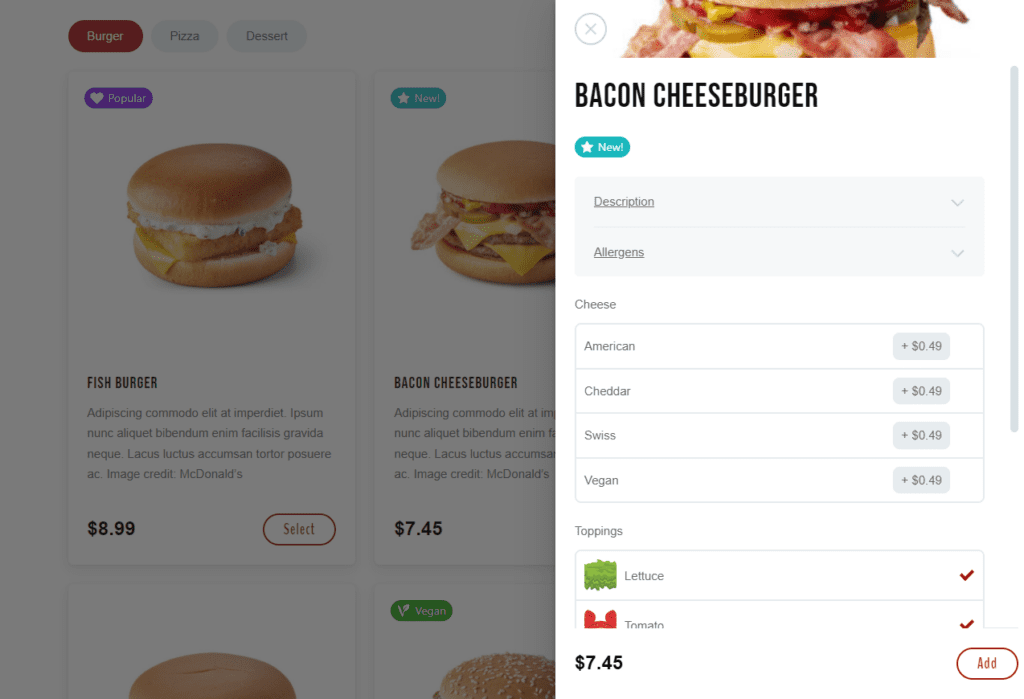
Here’s why Orderable stands out as the ideal solution for delivery-only restaurants:
- Versatility across business types: From cafes and bakeries to virtual restaurants and mom-and-pop stores, Orderable is versatile enough to cater to various business needs. It seamlessly handles food delivery and dine-in table ordering, ensuring every customer’s needs are met.
- Effortless setup & customization: With its integration into WordPress, Orderable simplifies the process of setting up an online store. It offers full control over the website, ordering process, promotions, and pricing. Plus, it even takes care of installing WooCommerce, making the setup process even smoother.
- Optimized order management: Back-of-house operations are crucial for a delivery-only restaurant. Orderable, with its integration with WooCommerce, ensures that order tracking, fulfillment, and management are streamlined and efficient.
- Maximizing profits: Unlike many platforms that take a commission on sales, Orderable adopts a commission-free model. Instead, it focuses on features that boost sales, such as checkout tipping, order bumps, and product add-ons.
- Customer-centric features: Orderable prioritizes the customer experience. Its app-like design is optimized for mobile users, and features like order notifications, nutritional information, and product labels keep customers informed and engaged.
- Streamlined location management: For businesses operating from multiple locations, Orderable offers a unified platform where customers can order from their nearest branch, ensuring timely deliveries and consistent service.
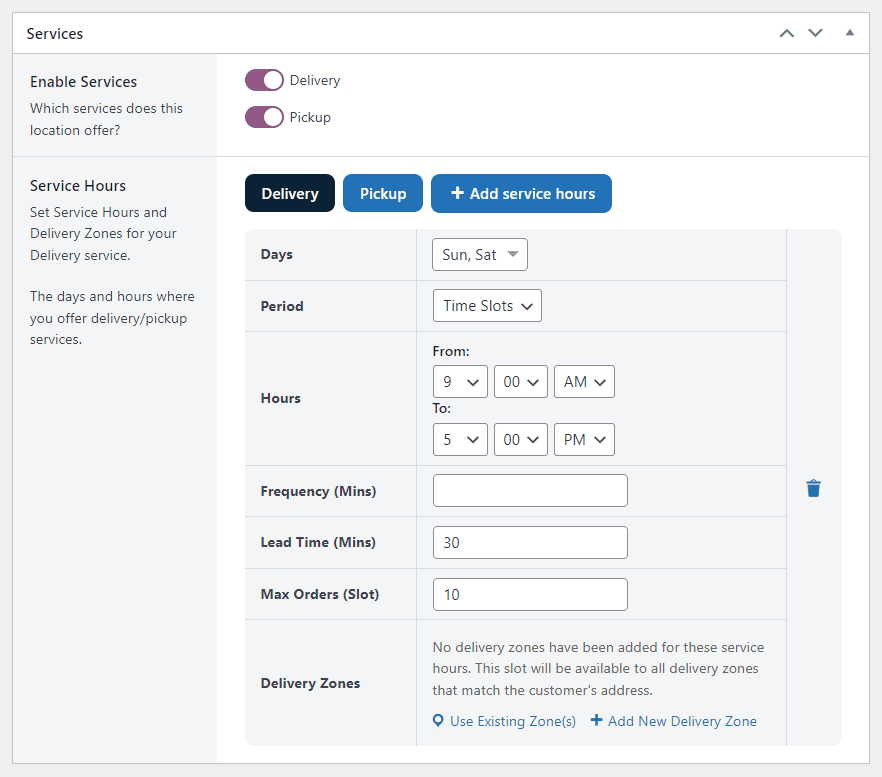
In a world where the efficiency and user-friendliness of your online platform can set you apart from the competition, Orderable emerges as the comprehensive solution tailored for delivery-only restaurants.
Tip #3: Put together the best possible restaurant menu
The menu is undeniably the centerpiece of any restaurant’s website, especially for a delivery-only establishment. It’s the digital representation of your culinary offerings, and as such, it needs to be both visually captivating and informatively rich.
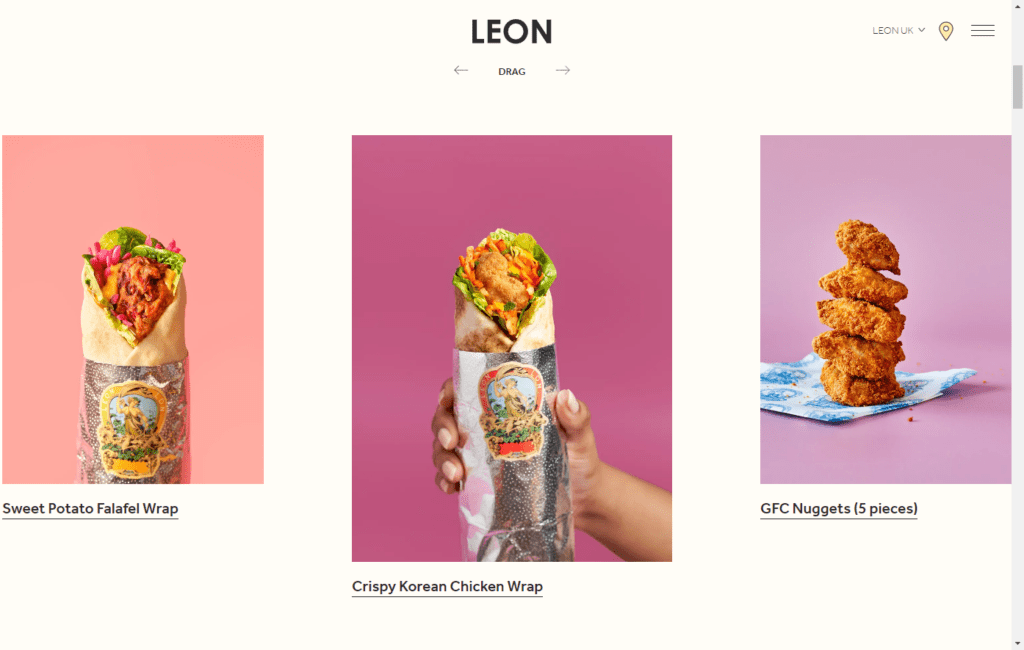
Here’s how to achieve that perfect balance:
- High-resolution imagery: Every dish you offer is a work of art and deserves to be showcased. High-quality, professional photographs can make a world of difference. They provide customers with a visual taste of what they can expect, enticing them to place an order. A well-shot image can capture a menu item’s textures, colors, and essence, making it irresistible.
- Detailed descriptions: While an image can captivate, a well-crafted description can seal the deal. Descriptions should provide insight into the flavors, ingredients, and even the inspiration behind a dish. This not only informs but also builds anticipation.
- Transparent pricing: Nothing deters a customer faster than hidden charges. Every item on your menu should have clear, transparent pricing. This builds trust and ensures customers can make informed decisions based on their budget.
Leveraging Orderable for the perfect online menu
Orderable isn’t just another online ordering system. It’s a tool designed with restaurants in mind. Here’s how it enhances the menu display:
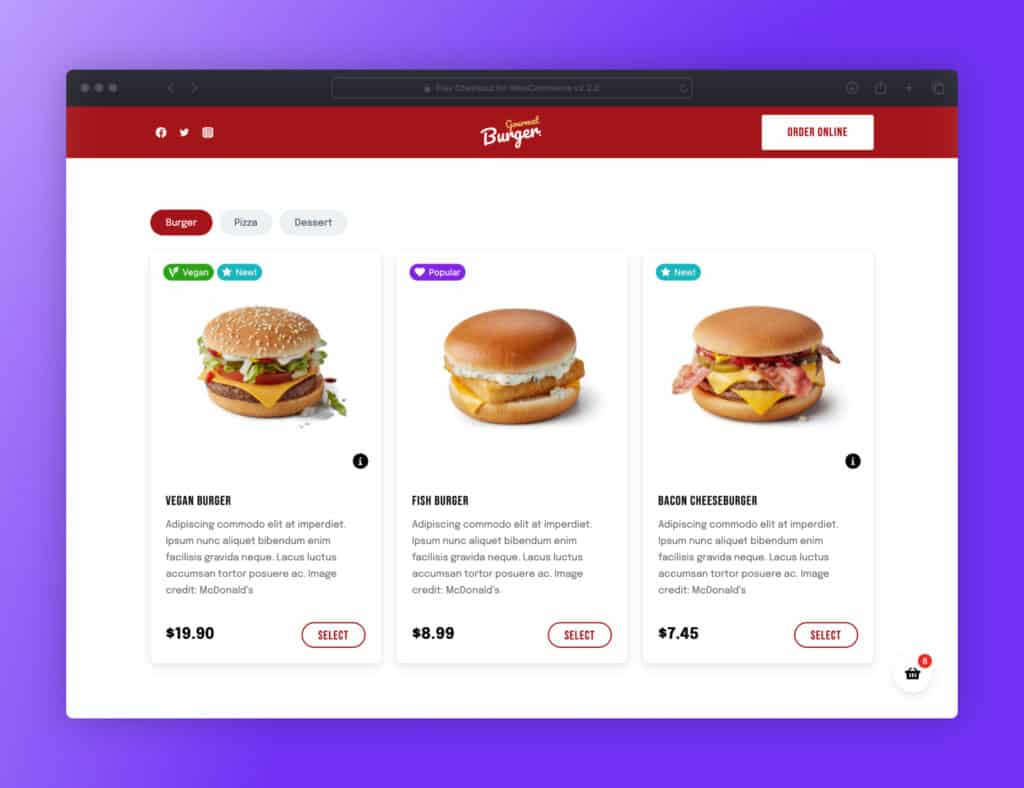
- Easy setup and customization: With Orderable’s integration into WordPress, restaurants can effortlessly set up their online menu. The platform offers full control, allowing for easy additions, edits, and updates. Plus, with its seamless integration with WooCommerce, pricing adjustments, and promotions become a breeze.
- Ready-made layouts: Crafting a visually appealing menu doesn’t require coding skills. Orderable offers ready-made layouts tailored for food establishments. These designs ensure that the menu is aesthetically pleasing and user-friendly.
- Product labels & nutritional information: In today’s health-conscious world, many customers appreciate knowing the nutritional content of their food. Orderable allows for the addition of nutritional information, ensuring customers are well-informed. Product labels can categorize dishes based on dietary preferences or promotions, making navigation simpler.
- Real-time updates: Menus evolve, and with Orderable, updates are instantaneous. Whether it’s a new dish, a limited-time offer, or a change in pricing, the platform ensures that customers always have access to the most current offerings.
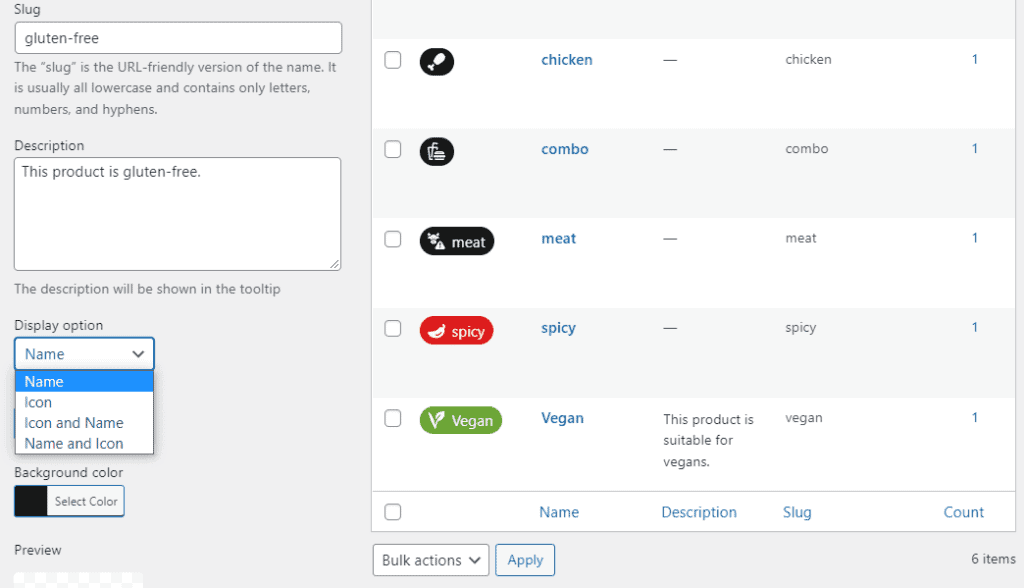
Tip #4 Prioritize good food photography
In the realm of online food ordering, where taste and aroma cannot be directly conveyed, visuals become the primary sensory experience for potential customers. The importance of high-quality imagery in this context cannot be overstated.
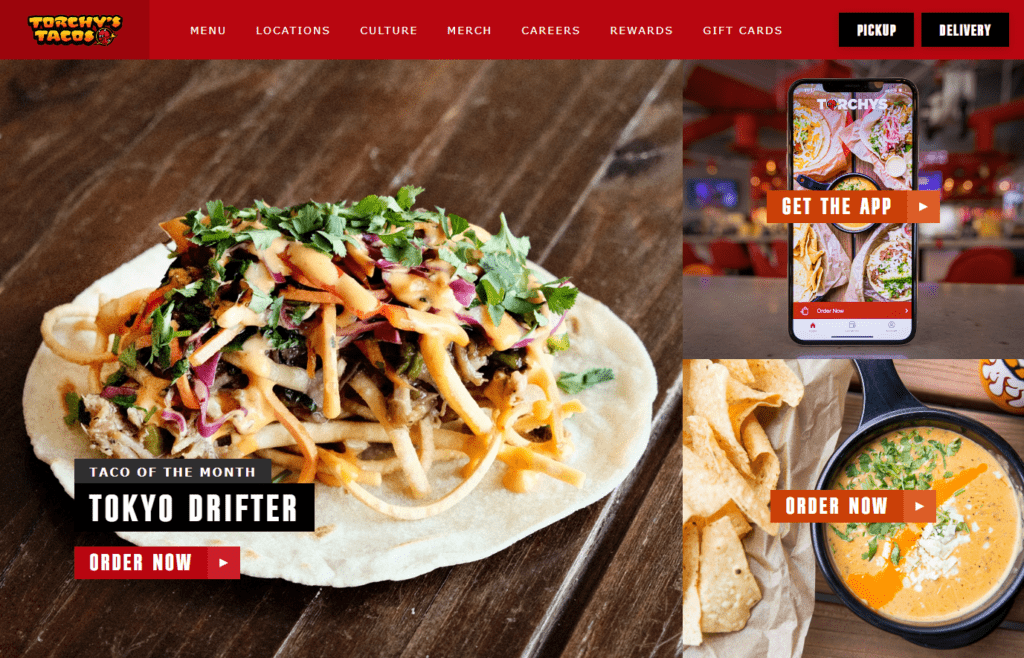
Here’s why investing in professional photography is paramount for a delivery-only restaurant:
- Evoking emotion: A well-composed photograph does more than just display a dish. It evokes feelings of hunger, desire, and anticipation. The right angle, lighting, and presentation can make a viewer almost taste and smell the dish through the screen.
- Highlighting details: Professional photographers possess the skills and equipment to capture the intricate details of a dish. From the glistening of a sauce to the steam rising from a hot meal, these details can make a dish come alive, showcasing its freshness and quality.
- Building trust: High-quality images signal professionalism and dedication to quality. Blurry, poorly lit, or unappetizing photos can raise doubts about a restaurant’s standards. In contrast, professional images reassure customers of the establishment’s commitment to excellence.
- Driving engagement: In the age of social media, shareable content is gold. Stunning photographs of your dishes can be shared, liked, and commented on, increasing your restaurant’s visibility and drawing in potential customers.
While the taste of your dishes is the ultimate judge, the visual representation is the first point of contact online. Investing in professional photography ensures that this first impression is impactful, enticing, and memorable, increasing the likelihood of customers choosing your restaurant over competitors.
Tip #5: Invest in good packaging
When running a delivery only restaurant, while the culinary creations take center stage, the role of packaging is often underestimated. However, it plays a pivotal role in ensuring that the food’s journey from the kitchen to the customer’s table is seamless and satisfactory.
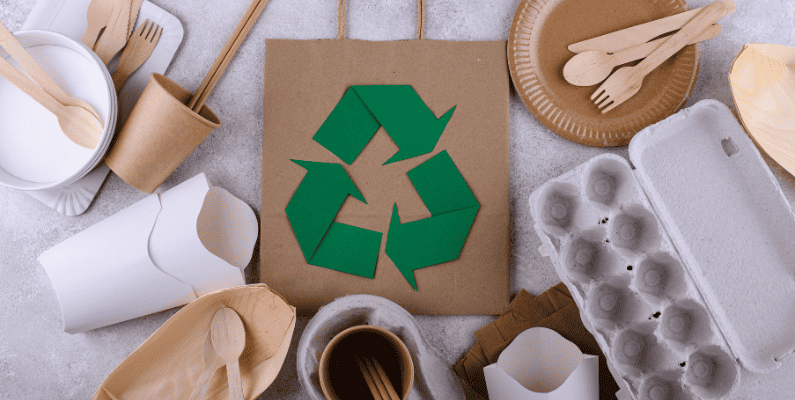
Here’s a deeper dive into the importance of packaging and its multifaceted role:
- Protection and integrity: At its core, packaging protects the food. A sturdy package ensures that the dish remains intact, preventing any spillage or mixing of ingredients. Imagine a pizza where the toppings have slid off or a leaked soup – such mishaps can be avoided with good packaging.
- Temperature retention: One of the challenges of food delivery is ensuring that hot dishes remain hot and cold ones stay cold. Advanced packaging materials can act as insulators, maintaining the food’s temperature for extended periods. This ensures that when a customer opens their order, it feels freshly prepared, enhancing their dining experience.
- Eco-friendly appeal: With growing awareness about environmental issues, many customers are becoming conscious of the ecological footprint of their choices. Biodegradable or recyclable packaging reduces environmental impact and serves as a selling point.
- Informative Labels: Packaging can also serve as a medium to convey information. Labels indicating the dish’s name, ingredients, nutritional information, or even reheating instructions can be invaluable for customers. It ensures clarity and can also cater to those with specific dietary preferences or allergies.
Tip #6: Ensure timely deliveries
The time between an order being placed and its arrival at the customer’s doorstep is filled with anticipation. Meeting or exceeding these expectations can be the difference between a one-time order and a loyal customer.
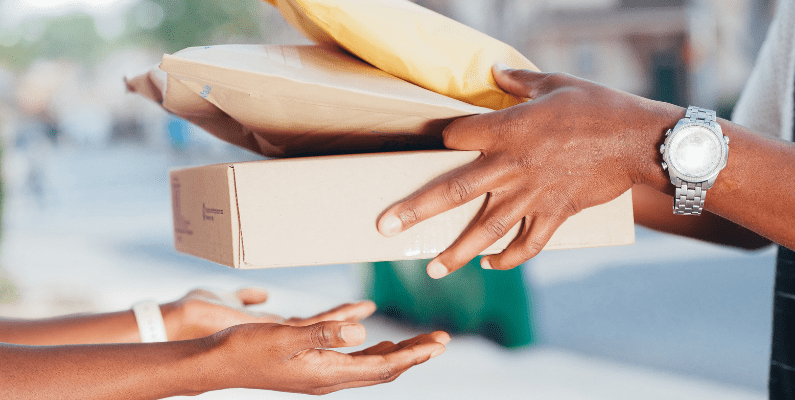
Here’s a closer look at the intricacies of timely deliveries and how platforms like Orderable can be instrumental:
- The Importance of speed: For many dishes, freshness is paramount. The quicker a meal is delivered, the better its taste and texture. But it’s not just about the food. Prompt deliveries show respect for the customer’s time, signaling professionalism and reliability.
- Efficient logistics: Behind every timely delivery is a well-oiled logistical machine. This includes optimized routes for delivery personnel, a streamlined process in the kitchen to prepare orders quickly, and technology to track and manage these elements in real-time.
- Delivery slots with Orderable: One of the standout features of Orderable is its ability to offer delivery slots. This empowers customers by giving them the flexibility to choose a delivery time that suits their schedule. Whether it’s a lunch order for a specific noon slot or a dinner timed to coincide with a movie night, this feature ensures that customers aren’t just waiting around, uncertain of their order’s arrival.
- Real-time notifications: Customers appreciate being in the loop. Orderable’s order notifications provide customers with updates about their order’s status. From the moment it’s being prepared in the kitchen to when it’s out for delivery, these notifications set clear expectations and reduce uncertainty. This transparency enhances the customer’s experience, making them feel valued and informed.
- Integration with WooCommerce: Orderable’s seamless integration with WooCommerce further streamlines the ordering and delivery process. It allows for efficient order management, ensuring that the back-of-house operations and the delivery teams are perfectly synchronized. This synergy ensures that orders are delivered quickly and accurately, reducing the chances of mix-ups or errors.
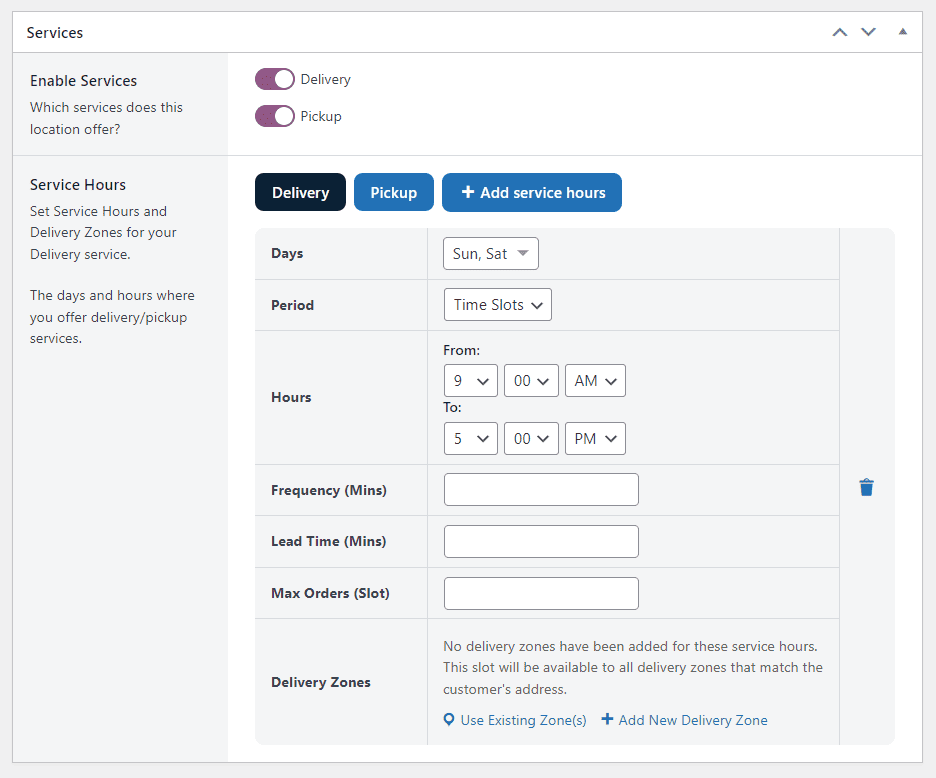
While the quality of the food is undoubtedly crucial, the efficiency and reliability of the delivery process play an equally vital role in a delivery-only restaurant’s success.
With tools like Orderable, restaurants are equipped to excel in this domain, ensuring that every meal reaches its destination promptly, much to the delight of the awaiting customer.
Tip #7: Gather feedback
In the dynamic landscape of the food industry, especially in the realm of delivery-only restaurants, staying attuned to customer preferences and operational efficiencies is paramount.
Here’s a deeper exploration of the importance of feedback and how it can drive excellence:
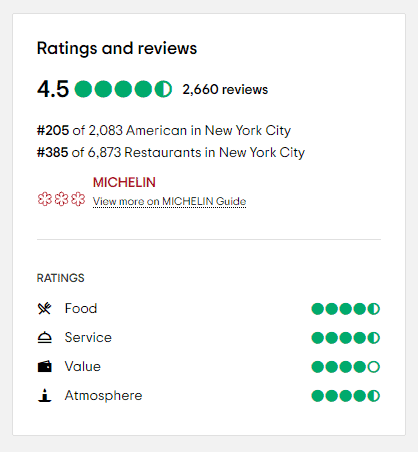
- Understanding customer preferences: Every customer interaction offers a wealth of insights. Whether it’s about the taste and presentation of a dish, the user-friendliness of the website, or the punctuality of delivery, feedback provides a window into the customer’s experience. This direct line of communication helps restaurants understand what’s resonating with their audience and what might be falling short.
- Building trust and loyalty: Actively seeking feedback and, more importantly, acting on it, sends a clear message to customers: their opinions matter. This fosters trust and loyalty, as customers feel valued and heard. It also provides an opportunity for restaurants to address grievances, rectify mistakes, and turn a potentially negative experience into a positive one.
- Informed decision-making: When collated and analyzed, feedback becomes a powerful decision-making tool. It offers data-driven insights that can guide everything from marketing strategies and promotional campaigns to operational changes and staff training programs.
Tip #8: Keep your menu up to date
With an ever-evolving palate of global consumers and the constant quest for new flavors, restaurants must continually reinvent and refresh their offerings.
A diverse and dynamic menu caters to a broader audience and ensures that the dining experience remains exciting and memorable.
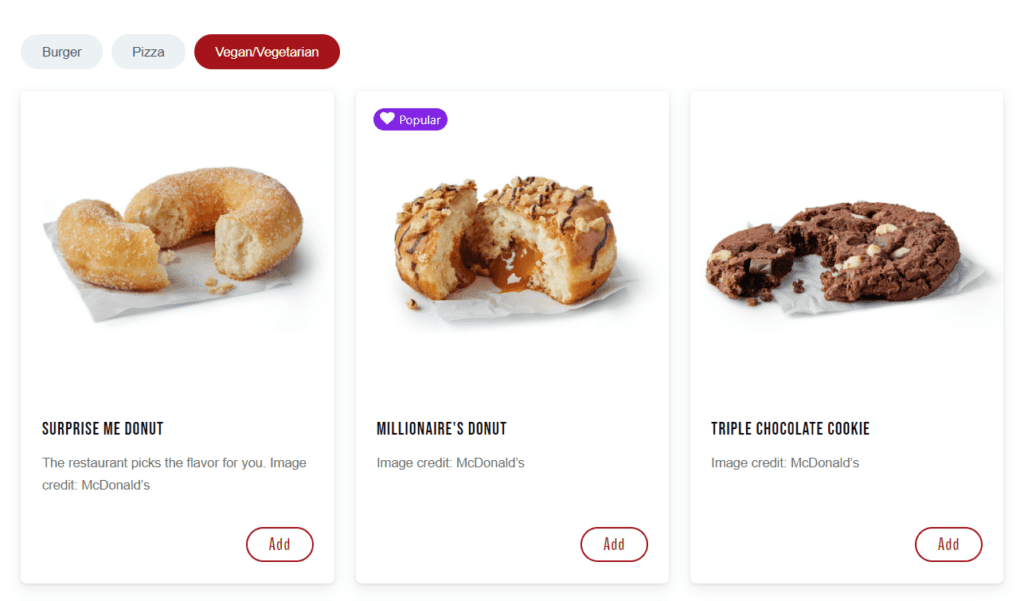
Here’s a deeper dive into the importance of varied menu offerings and how they can elevate a delivery-only restaurant:
- Meeting diverse palates: Every customer comes with their unique set of preferences. By offering a diverse menu, restaurants can cater to a wide range of tastes, from the traditional to the adventurous. This inclusivity ensures that there’s something for everyone, increasing the chances of repeat orders.
- Limited-time dishes: Introducing dishes for a limited period creates a sense of urgency and exclusivity. It encourages customers to order before they miss out, driving sales and creating a buzz. These dishes can be themed around festivals, events, or even current trends.
- Collaborative menus: Collaborations with guest chefs, influencers, or even other restaurants can bring a fresh perspective to the menu. It’s an opportunity to blend different culinary styles, techniques, and flavors, offering customers something unique and unexpected.
- Cultural and thematic offerings: Celebrating global cuisines or introducing thematic menus, like a Mediterranean week or a street-food special, can transport customers on a culinary journey. It’s an opportunity to educate, entertain, and offer a taste of different cultures.
Tip #9: Use storytelling in your marketing strategy
For a delivery-only restaurant, where physical interactions are limited, storytelling becomes even more crucial in building a bond with customers.
Here’s a closer look at the art of culinary storytelling and its transformative power:
- The origin story: Every brand has its genesis, its moment of inception. Sharing the journey of how the restaurant came to be, the challenges faced, the milestones achieved, can humanize the brand. It allows customers to see the passion, dedication, and vision that drives the establishment.
- Inspiration behind dishes: Every dish is a canvas of creativity. Whether it’s a family recipe passed down through generations, a dish inspired by travels, or a fusion born out of experimentation, sharing these backstories adds depth to the dining experience. It’s like giving customers a backstage pass into the chef’s mind.
- Cultural and historical ties: Dishes often carry the weight of history and culture. Narrating these tales, be it the origins of a dish, its cultural significance, or its role in festivals and traditions, can be both educational and engaging. It’s a celebration of culinary heritage.
- Visual Storytelling: In the digital age, visuals are a powerful medium of storytelling. High-quality images, videos, or even behind-the-scenes glimpses can paint a vivid picture, allowing customers to visually partake in the brand’s journey.
Tip #10: Cater for dietary needs
Recognizing and catering for dietary needs isn’t just good business sense. Here’s a deeper exploration of the importance of diverse dietary options and how Orderable can help you set it up:
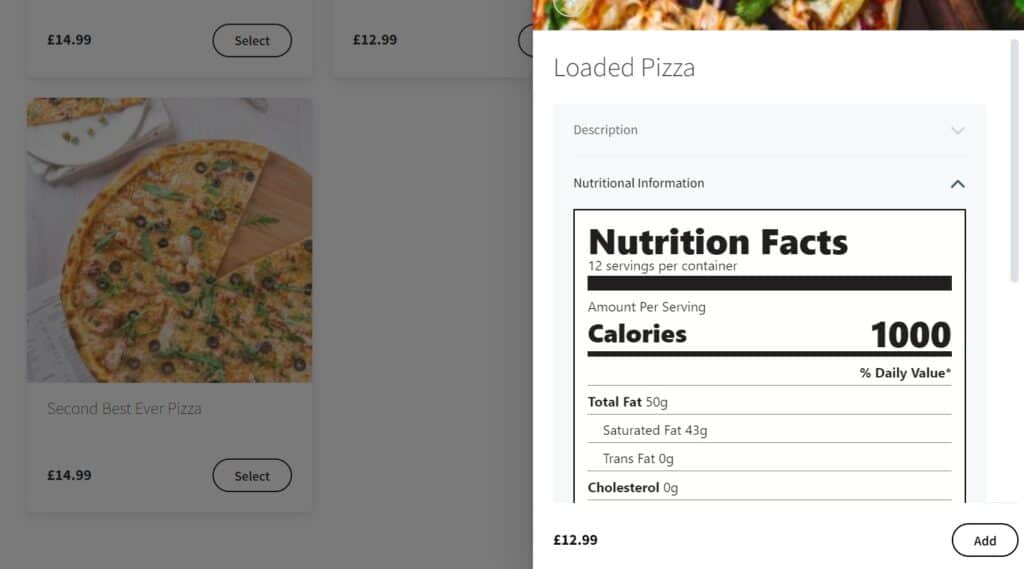
- Reflecting global trends and lifestyles: As people become more health-conscious and environmentally aware, diets like veganism, vegetarianism, and gluten-free have moved from the fringes to the mainstream. Offering dishes that cater to these preferences ensures that your restaurant remains relevant and in tune with global trends.
- Medical and health considerations: Beyond personal and environmental choices, many individuals have specific dietary needs due to medical conditions, allergies, or health goals. For instance, dishes suitable for diabetics, low-sodium options, or keto-friendly meals can cater to these specific needs, ensuring everyone has delicious options to choose from.
- Cultural and religious sensitivities: Dietary choices are often deeply intertwined with cultural and religious beliefs. Halal, kosher, or vegetarian dishes aligned with religious practices can cater to a significant segment of the population, respecting and honoring their beliefs.
- Enhancing customer experience: When customers see that their specific dietary needs are acknowledged and catered to, it enhances their overall dining experience. It’s a signal that the restaurant cares about their well-being and preferences.
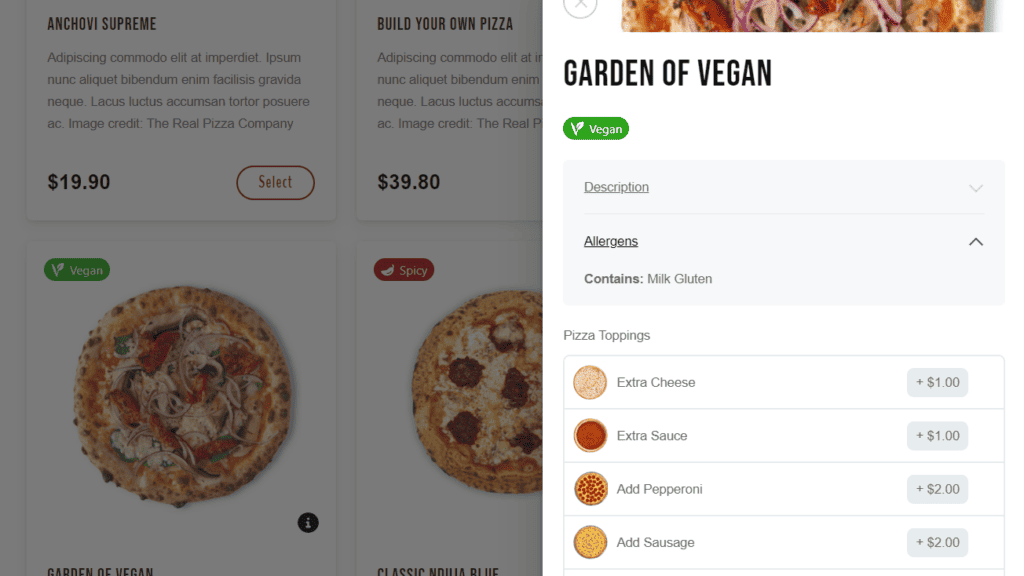
Leveraging Orderable for dietary needs
Orderable, with its suite of features tailored for restaurants, becomes a powerful ally in showcasing and managing diverse dietary options:
- Product labels: One of Orderable’s standout features is its product labels. This allows restaurants to clearly label dishes based on dietary categories, be it vegan, gluten-free, nut-free, or any other classification. These labels not only inform but also streamline the browsing experience for customers, allowing them to quickly identify dishes that align with their dietary preferences.
- Nutritional information: In addition to dietary labels, Orderable allows restaurants to provide detailed nutritional information. This transparency ensures that health-conscious customers can make informed choices, understanding their meals’ caloric, macro, and micronutrient content.
- Customizable menu layouts: With Orderable’s customizable menu layouts, restaurants can create dedicated sections or tabs for specific diets. Whether it’s a vegan section, a low-carb corner, or a gluten-free gallery, this organization ensures that customers can navigate the menu effortlessly.

Get your delivery-only restaurant set up and running today
The landscape of the restaurant industry is rapidly evolving, with delivery-only models taking center stage. As we’ve journeyed through the intricacies of setting up and running a delivery only restaurant, one thing is clear: the right tools and strategies are paramount.
Orderable emerges as a game-changer in this domain. Its comprehensive suite of features, tailored specifically for restaurants, ensures that every aspect of the online dining experience is optimized. From crafting a visually appealing and functional menu to catering to diverse dietary needs, Orderable simplifies, streamlines, and elevates the process.
But beyond the technicalities, it’s about the essence of dining. It’s about connecting with customers, sharing culinary stories, and delivering memorable experiences right to their doorsteps.
Get your delivery-only restaurant set up and running today with Orderable.
Don’t miss out on the latest Orderable news!
Sign up for our newsletter to receive the latest news from the blog, you’ll get pinged every week with a digest of the latest updates.

Related Articles
How to Start a Flower Business from Home in 2024
Email Marketing for Restaurants: A 2024 Guide
How to Add Product Addons to WooCommerce
Get Your Restaurant Online With Orderable
The WooCommerce plugin designed to help restaurants take orders online – with no added fees!
View Pricing
